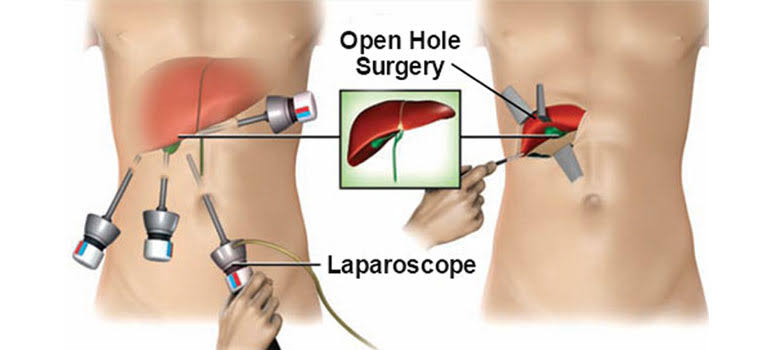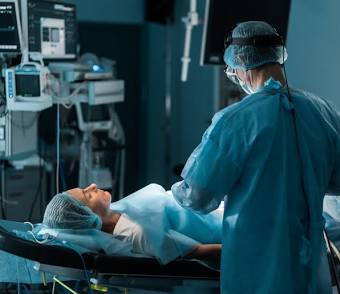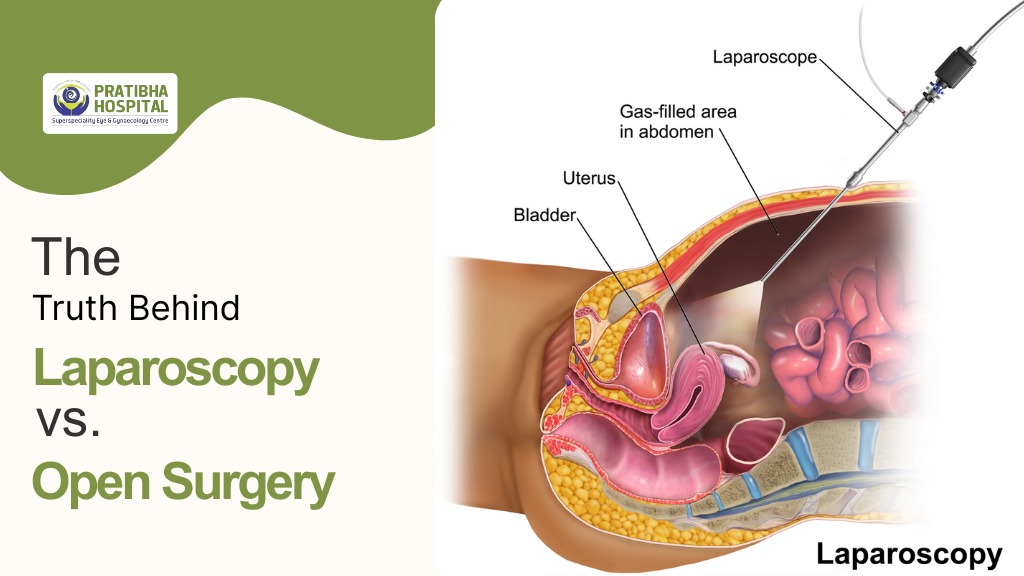The Truth Behind Laparoscopy vs. Open Surgery
When it comes to surgical procedures, laparoscopy and open surgery have long been the two main methods used by doctors. Both are commonly used for various procedures, but the methods differ significantly in their approach, benefits, and recovery times.

Understanding these differences is crucial when it comes to making informed decisions about your health care.
Let’s explore the truth behind it.
What Is Laparoscopy?
Laparoscopy, often referred to as minimally invasive surgery, involves making small incisions in the abdomen to insert a camera and specialized instruments. The surgeon can then perform the procedure with precision, without the need for large cuts. This technique has been widely used for various conditions, from gallbladder removals to abdominal surgeries.
The growing popularity of laparoscopic surgery in Jalgaon has been attributed to its many benefits, such as reduced pain, smaller scars, and quicker recovery times. Thanks to modern technology, laparoscopic procedures have become a go-to solution for many patients seeking minimally invasive treatments.
What Is Open Surgery?
While this method is sometimes necessary for more complex conditions or when a large area needs to be exposed, it generally comes with a longer recovery time, more pain, and larger scars.
Although open surgery has been a tried-and-tested approach, it often requires longer hospital stays and more intensive postoperative care. As technology and surgical techniques have evolved, the focus has shifted toward minimally invasive surgery, especially when alternatives like laparoscopy are available.
Laparoscopy vs. Open Surgery: Key Differences
When deciding between laparoscopy vs. open surgery, there are several factors to consider. Let’s break them down to better understand their advantages and disadvantages:
1. Incision Size
The clearest difference between laparoscopy and open surgery lies in the size of the cut made during the procedure. In laparoscopy, only a few small incisions are made, each about the size of a keyhole, which are less invasive. In open surgery, a single large incision is required, which can leave a more noticeable scar.
2. Recovery Time
Laparoscopic surgery is known for its fast recovery. With tiny incisions and a less invasive procedure, patients feel less pain and discomfort. This means they can return to their normal activities sooner than they would after open surgery, which typically requires a longer recovery period due to the larger incision and more extensive healing process.
3. Pain and Discomfort
Patients who undergo laparoscopic surgery in Jalgaon often report significantly less pain after the procedure. The smaller incisions result in minimal tissue disruption, leading to reduced pain occurring after the operation and a faster return to daily life. Open surgery, however, tends to cause more pain due to the larger incision and the deeper tissue cuts required.
4. Risk of Infection
With just a few small surgical cuts in laparoscopy, the risk of infection is reduced. The larger incisions in open surgery can introduce more opportunity for infection, requiring longer hospital stays and careful postoperative care.
5. Scarring
Since laparoscopy uses smaller incisions, the scars left behind are less noticeable and fade more quickly than those resulting from open surgery. In contrast, open surgery leaves larger scars, which may be more visible and take longer to heal.
Benefits Of Minimally Invasive Surgery
As medical technology continues to advance, more patients are opting for minimally invasive surgery, such as laparoscopy, due to its numerous benefits.

Here are some of the key advantages of minimally invasive surgery:
1. Faster Recovery
Laparoscopy is known for helping patients recover quickly. When the incisions are tiny, patients usually don’t feel as much pain. This allows them to get back to their normal routine much quicker compared to traditional open surgery.
2. Reduced Risk of Complications
Since laparoscopic procedures cause less disruption to the body, the risk of complications such as infections, blood loss, and scarring is lower; that’s why it is considered a low-risk surgery. This makes it a preferred choice for many types of surgeries.
3. Precision
The laparoscopic technique allows surgeons to operate with more precision due to the use of a camera and advanced instruments. This accuracy often results in improved outcomes, particularly during sensitive surgeries.
4. Shorter Hospital Stays
Because the surgery is less invasive and the recovery time is shorter, patients typically enjoy reduced hospital stays. This not only makes patients more comfortable but also helps in cutting down healthcare costs.
5. Minimal Discomfort
Minimally invasive surgeries often result in less post-operative discomfort, allowing patients to return to their normal activities much sooner. With laparoscopy, patients report feeling less sore and fatigued after surgery compared to open surgery.
When Is Open Surgery Necessary?
Although laparoscopy has several benefits, some cases may still require open surgery for better outcomes. In cases where the condition is complex, the procedure is difficult to perform with minimal access, or the surgeon needs to have a clear, direct view of the affected area, open surgery may be necessary.
For example, in some cases of cancer, bowel obstruction, or trauma, open surgery may be required to ensure that the surgeon has full access to the area and can perform the necessary repairs or removals effectively.
Laparoscopic Surgery In Jalgaon
Choosing between laparoscopic surgery and open surgery is a common concern for patients. The right option depends on your health condition, the complexity of the surgery, and your recovery goals.
In many cases, laparoscopy proves to be the better choice. In Jalgaon, this modern approach is growing in popularity due to skilled doctors and improved healthcare infrastructure. Patients trust this method for its safety, affordability, and efficiency.
Here’s why laparoscopic surgery in Jalgaon is preferred:
- Less invasive: Smaller cuts mean less pain, minimal scarring, and reduced risk of infection.
- Faster healing: Patients usually recover quicker and return to daily life sooner.
- Shorter hospital stay: Most procedures don’t require long hospital admissions.
- Lower cost: Affordable treatment without compromising on quality.
- Experienced surgeons: Jalgaon offers access to doctors trained in minimally invasive surgery.
- Wider use: Effective for conditions like gallstones, hernias, appendicitis, and gynecological issues.
- Better patient care: Hospitals here focus on personalized care during and after surgery.
If you’re still confused between laparoscopy & open surgery, consult a specialist who can help you in deciding what suits your condition best.







